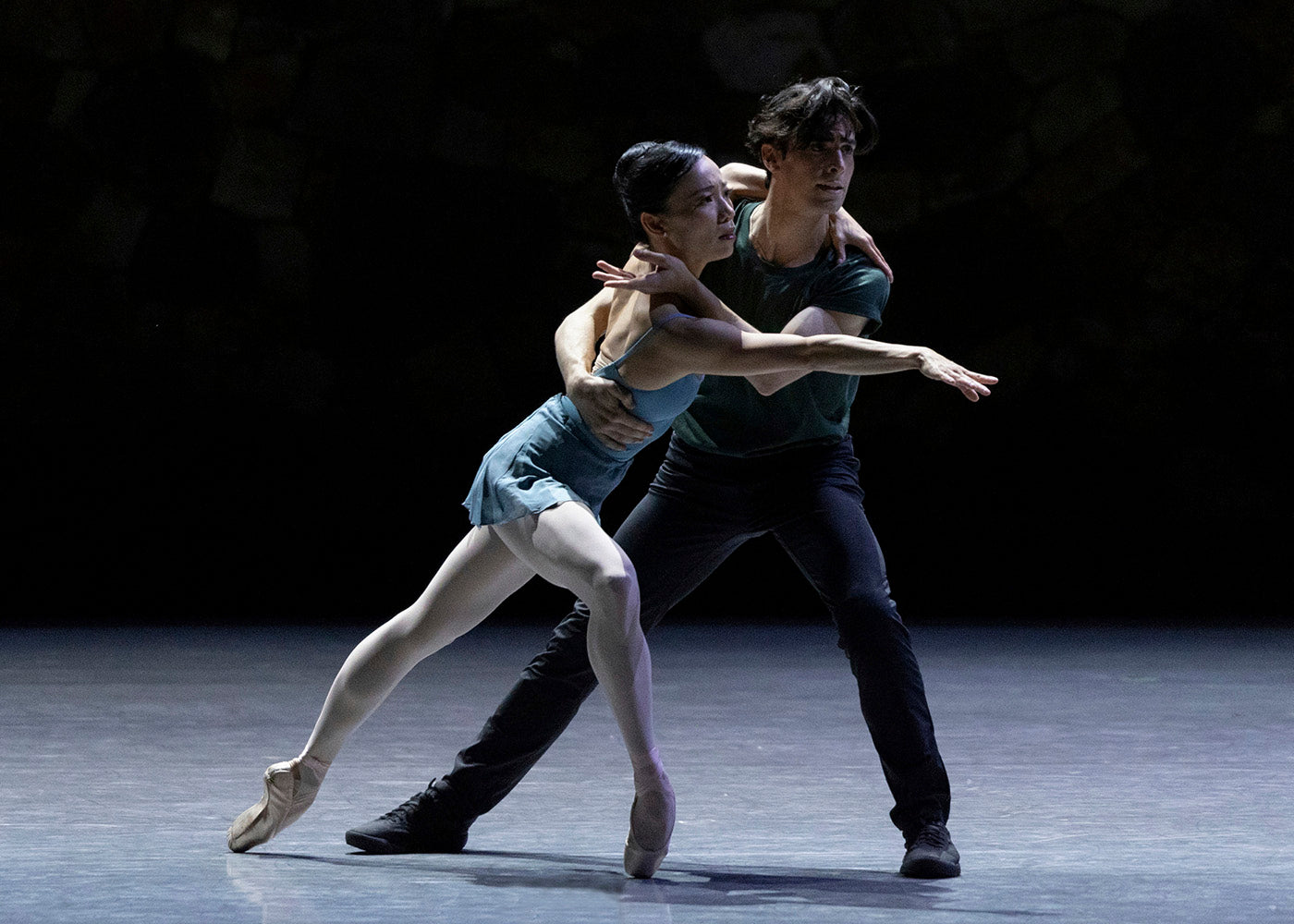Sparkling Shiraz
Semantic satiation is the psychological phenomenon in which repetition causes a word or phrase to temporarily lose meaning for the listener.
Plus
World-class review of ballet and dance.
Semantic satiation is the psychological phenomenon in which repetition causes a word or phrase to temporarily lose meaning for the listener.
PlusI make my way up the stairs at the Substation. Along all four sides of the large room, rows of seats are arranged. Event warning: sudden loud noises. Content warning: death. I find a seat along the long side wall, with my back to the window.
PlusMartha Graham said that “movement never lies”—but what of stillness? For NYC Dance Project’s latest book, Martha Graham Dance Company: 100 Years, photographers Ken Browar and Deborah Ory set out to explore Martha Graham’s legacy through photos.
PlusFrom the back of the stage, a single searchlight points in the direction of the audience, and as it does, it sweeps across the forms of seven dancers in Stephanie Lake’s “Seven Days.”
PlusAt a time when the arts in America are under attack and many small dance companies are quietly disappearing, San Francisco’s dance scene—for decades second in its volume of activity only to New York—still has a pulse.
PlusNoé Soulier enters the space without warning, and it takes a few seconds for the chattering audience to register the man now standing before them, dressed simply in a grey t-shirt and black pants, barefoot.
PlusIn the first few seconds that the lights come up on BalletX at the Joyce Theater, an audience member murmurs her assent: “I love it already.”
PlusThe right foil can sharpen the distinct shapes of a choreographic work, making it appear more completely itself through the comparison of another.
Plus“Was it Benjamin Franklin, that sagacious and witty man, who, on signing the Declaration of Independence that hot July day in 1776, admonished his colleagues that they had better hang together lest they all hang separately?
PlusOver the span of two weeks, New York City Center’s Fall for Dance Festival brought to its storied stage a wide range of performers from across the globe with different disciplines, perspectives, and movement vocabularies. Its fifth and final program reiterated what it’s all about: exploring, and celebrating, all the different ways we dance.
PlusProgram Four of the 22nd annual Fall for Dance Festival opened with an odd expression of gratitude: “thank you for going through all that you went through to get here,” Michael S. Rosenberg, the President and CEO of New York City Center, told the crowd. The 80th session of the UN General Assembly had shut down much of midtown (even to pedestrians), including the block of 55th street that is home to City Center.
PlusWatching Matthew Bourne's reworked version of the “star-cross'd lovers,” I was briefly reminded of Veronica, played by Winona Ryder, in the dark 1988 comedy by Daniel Waters and Michael Lehmann, Heathers, and her line, “my teen angst bullshit has a body count.” Yes, this is the darker side of Bourne's repertoire,...
PlusThe choreographer Alexei Ratmansky reflects on the war in Ukraine, the connection between geopolitics and ballet, and joining the house of Balanchine.
Plus
Beneath blue California skies, manicured trees, and the occasional hum of an overhead airplane, Tamara Rojo took the Frost Amphitheater stage at Stanford University to introduce herself as the new artistic director of San Francisco Ballet.
PlusAfter a week of the well-balanced meal that is “Jewels”—the nutritive, potentially tedious, leafy greens of “Emeralds,” the gamy, carnivorous “Rubies,” and the decadent, shiny white mountains of meringue in “Diamonds”—the New York City Ballet continued its 75th Anniversary All-Balanchine Fall Season with rather more dyspeptic fare.
PlusAn “Ajiaco” is a type of soup common to Colombia, Cuba, and Peru that combines a variety of different vegetables, spices, and meats.
Plus